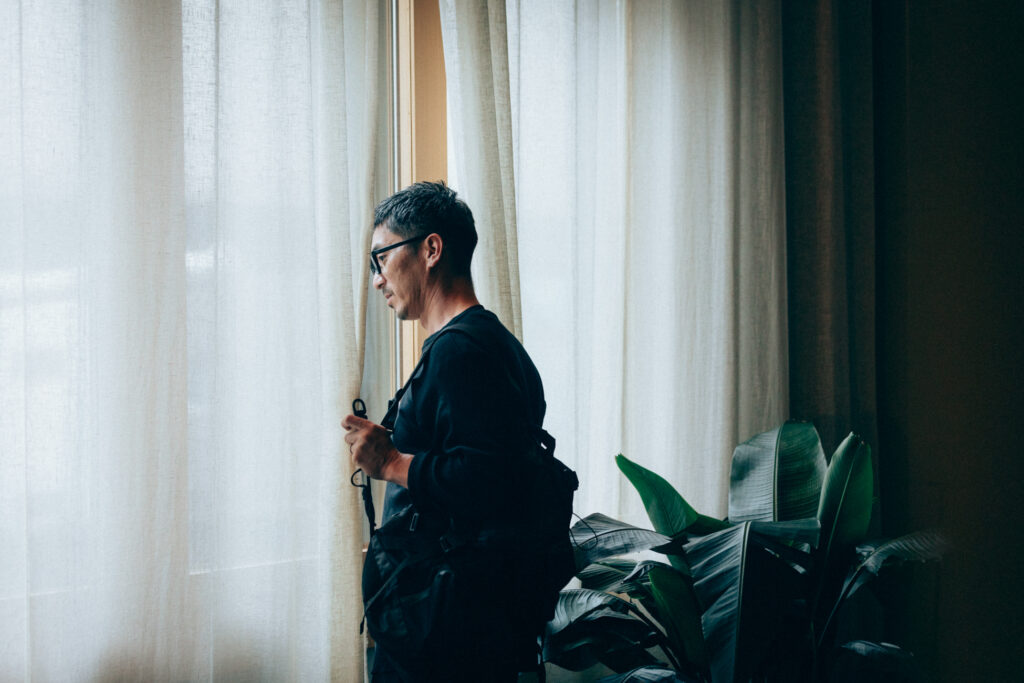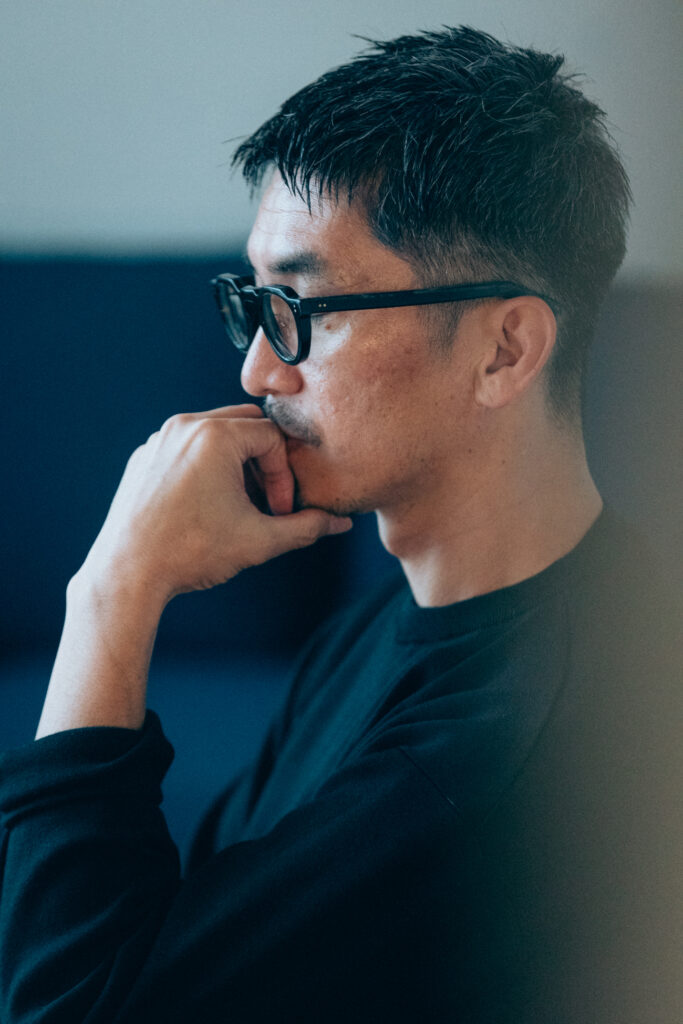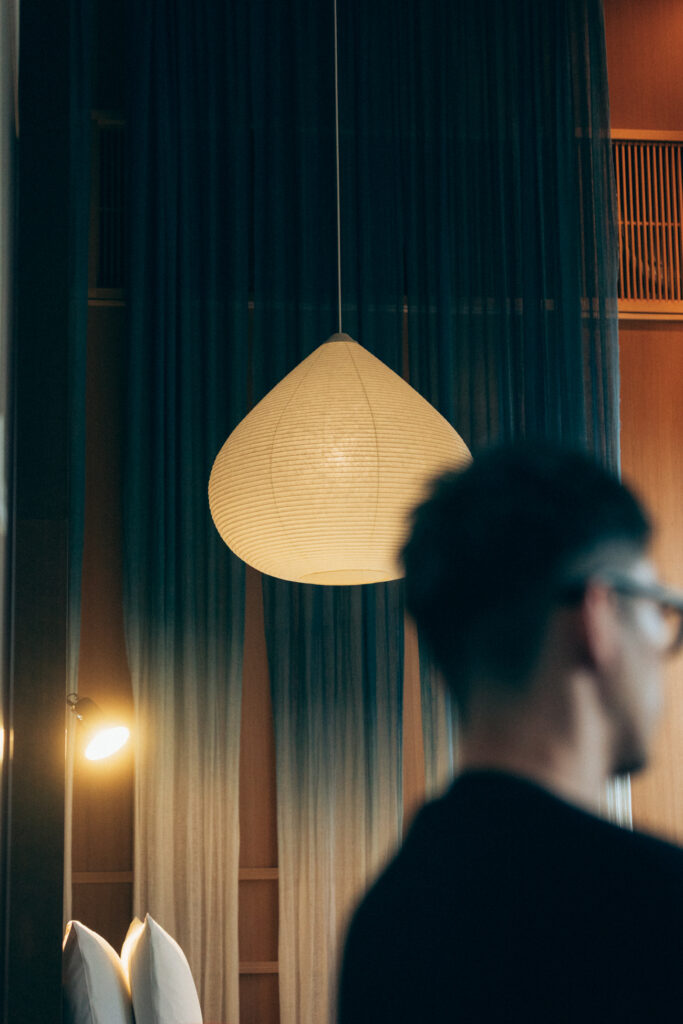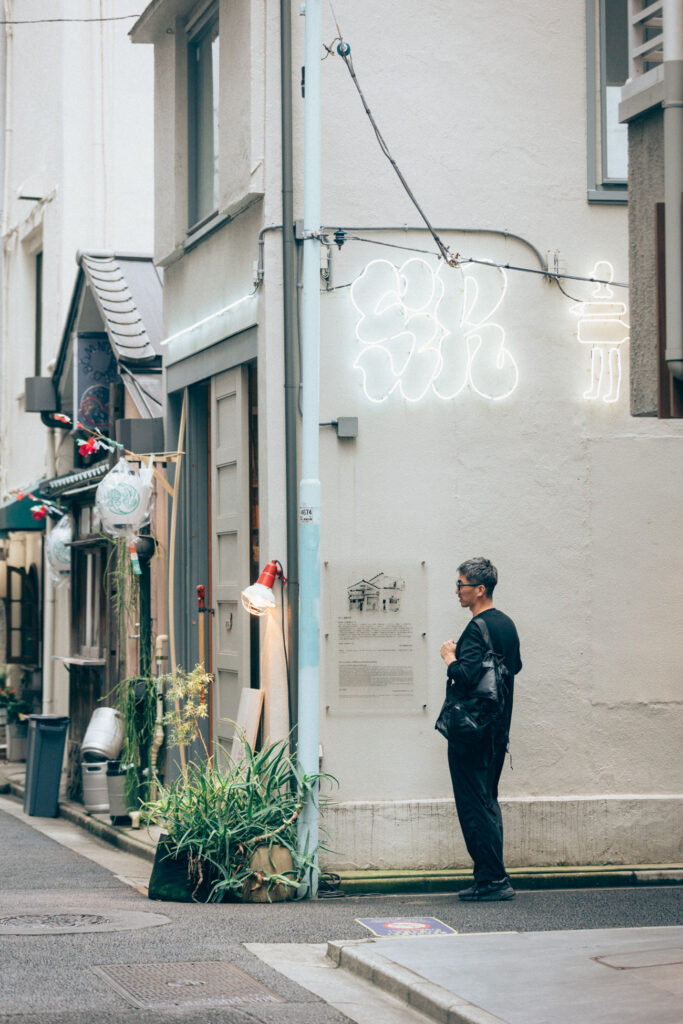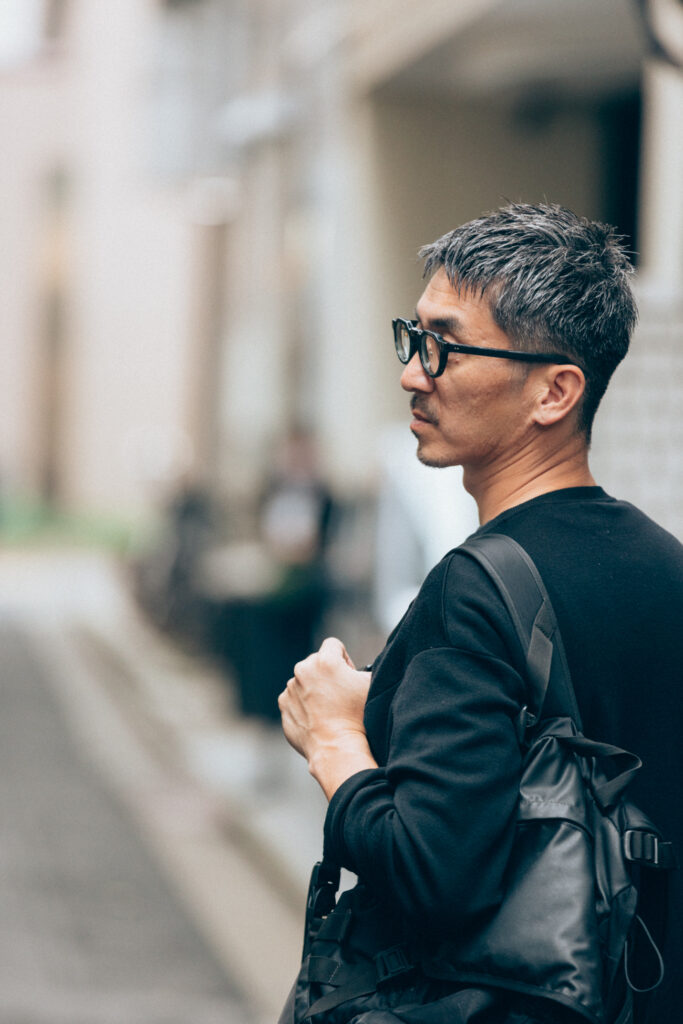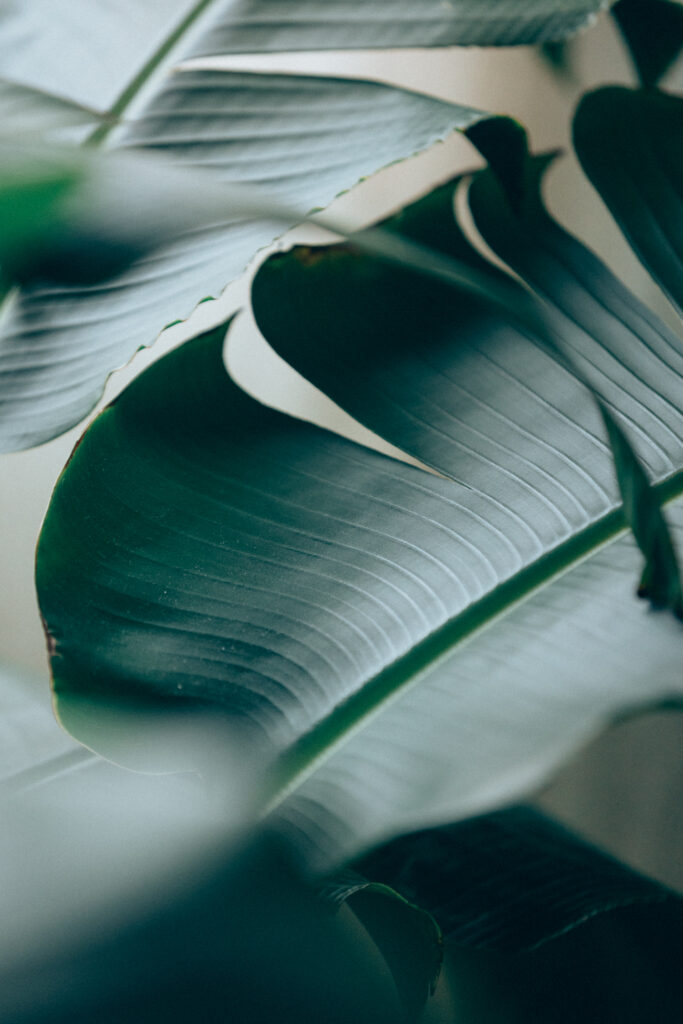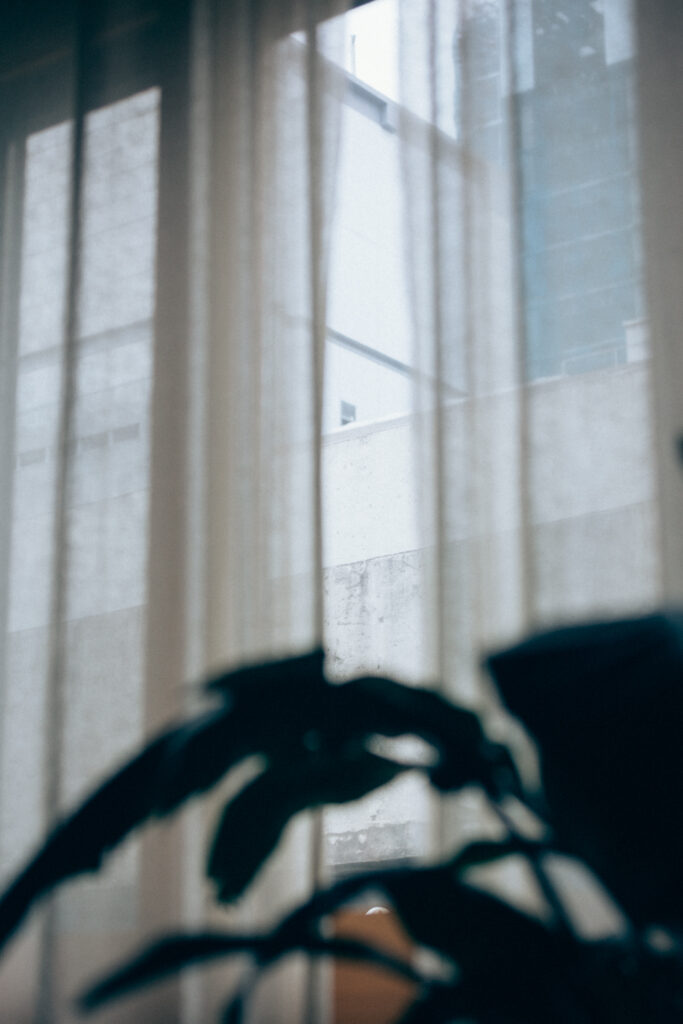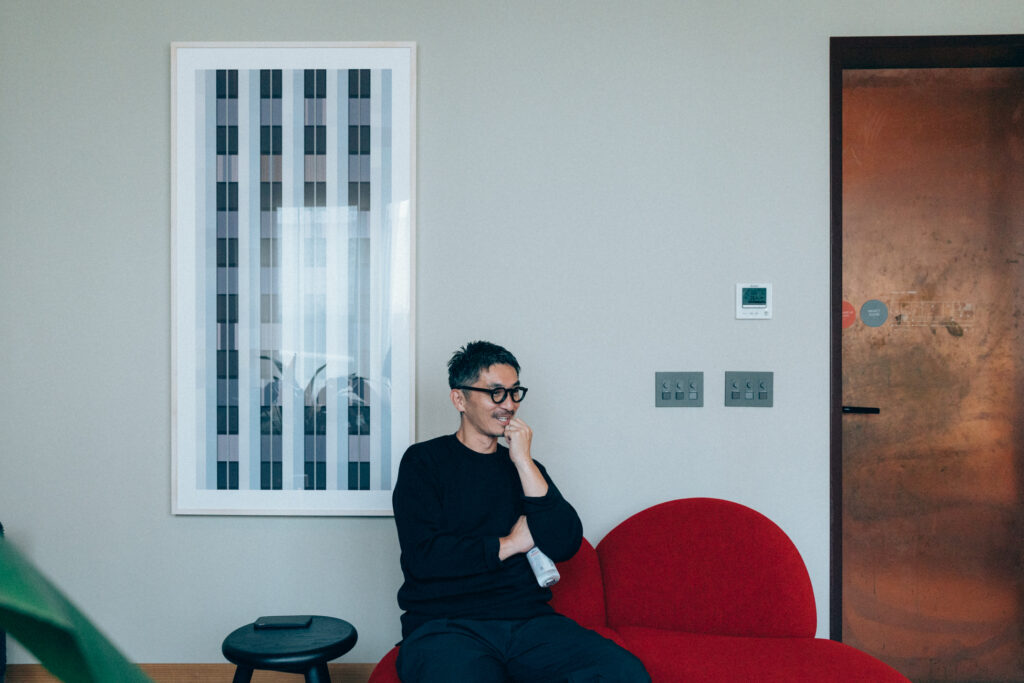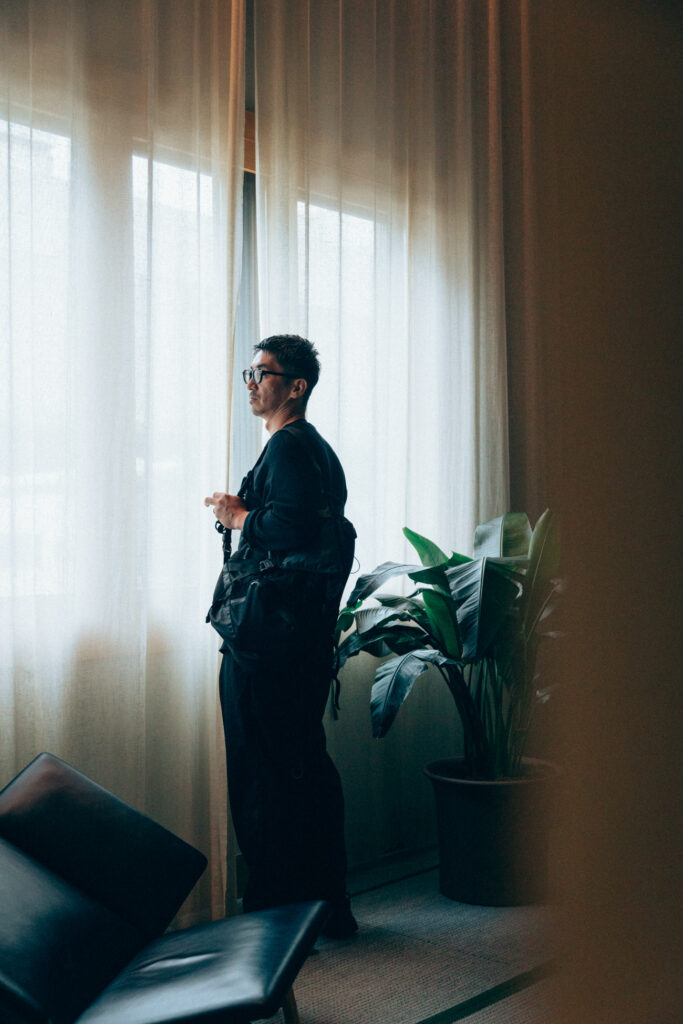


The allure of unbound nature
Experimentation in an inescapable city
●How did you come to work in Kabutocho?
It all started with the K5 project. I had met Yudai Oka (of K5) at a previous job, and we had worked together previously on a hotel project in Palau. He was living in Singapore at the time.
●What was your impression when you heard about the urban development of Kabutocho?
At first, I had only an image of the Tokyo Stock Exchange and people in suits, businessmen. I honestly had no idea why you would build a hotel there. But, over time, I naturally became interested in the idea of starting a business there.
●How did you start the project?
It all started with a “That sounds interesting!” and then a flurry of activity. There was a design team in Stockholm called CKR, but locally, there needed to be a team that could give shape to their designs. We were able to do both the design and construction of the hotel because we thought we could honestly help to realize the project. I have seen many hotels in my life, but I had never seen anything like this; CKR’s approach was fascinating.
●What was CKR’s approach?
They were able to express Japan from a different angle. It’s surprisingly difficult to “express Japan” in everyday life, but they were able to accurately express “Japan, as seen from the outside”. I think it’s something that only Swedes who know and understand Japan on a deep level can see. Another thing that resonated with me while working with them was that before accepting our proposals, they always asked us ‘Why do you think that?’ Of course, they would always say ‘yes’ but they would always ask first. For us, we had clear reasons for wanting to work on this project, so discussing these things with them was a pleasure.
●Conversely, were there any challenges, or things you found difficult?
It was simply just fun! If there were any difficulties, it was only that this building was tilted 20 cm from left to right.
●Oh! Is that so?
There are steps that have been placed in some areas, such as in the long corridor, to counterbalance the 20cm incline. Of course, any safety-related issues have been resolved.
●I didn’t know that! When you look at a property for a project, what are the types of things you look for in a building?
First, we look at the technical infrastructure areas like water, electricity, and drainage. Next, we look at the history of the building. By history, I mean what materials have been used in its construction. For example, the oak used for the flooring in the restaurant ‘caveman’ is a material that is also dated back to the time of the building itself. By looking at the historical background and the selection of materials, we think about the present, past, and future. And by unraveling the context of this building, we can approach a concrete expression. It’s like a riddle-solving game.
●What are some of the features of K5 that you found particularly interesting?
It has to be the ceiling height. This building has a ceiling height of 4.3 meters, but only on the fourth floor. The building was originally completed as a bank annex, but the top floor had a ballroom, so the ceiling was designed to be high. Nowadays, it’s impossible to find a building that maintains such a luxurious ceiling height. Inevitably, profitability of real estate means there’s always talk of putting more floors into a building. So I learned a lot about the meaning, style, and dignity of buildings (especially for banks back in those days). I realized that they were conveying the influence of the building with “something other than money”.
●In the K5 project, you met a lot of unique people, including the CKR team, Takahiro Honma, who was the representative of Backpackers’ Japan (at the time), the members of Media Surf, and the tenants who came into the project. What was your impression of the way the team was formed?
The adults in the group didn’t talk to us at all! Of course, there were process charts and manuals, but nobody wanted to open those pages. But that was rather fun. When you pursue something interesting, to move forward, you always have to make changes, don’t you? Otherwise, you could just leave it to the big guys and go on exactly as they want. But that’s not the case here. Everyone on the team is a star in their own right! It’s kind of like an attraction or a zoo. Elephants can’t replace giraffes, but they don’t come together either. It was like I was creating a zoo every day – it was so interesting.
It was also fascinating to make the furniture for the hotel. Initially, the costs of producing them were not viable, so I traveled all over the world to find someone who could make it for us; venturing to Thailand, China, and Korea. I have a lot of memories of this place, even down to the flower pots in this room.
●How did you start work on Matsuyoshi, the building that houses Human Nature, SR, and Omnipollo?
First, we started with the thought, “I want to make something out of this eel restaurant building, but what’s possible?” I could picture Human Nature in the space, but I wondered why the walls of Omnipollo were so blue. At that time, the Kabutocho area was completely gray and full of office workers wearing neckties and such, and Heiwa Real Estate were very accommodating of that.
● I think Matsuyoshi is a rather old wooden building, but it’s still very much in use and is still going strong!
Wooden structures can last for a long time with just a little bit of hard work. Even Horyu-ji Temple is about 1,400 years old but has been maintained because it’s always been in good hands. On the other hand, if you let go of it, it will quickly revert back to nature.
●How did you start “KITOKI”?
KITOKI began with the idea of building a low-rise wooden structure, which we initially presented as a three-story building, but in the end, it turned out to be a nine-story building with a rooftop. As KABUTO ONE was being built at the time, we proposed that it should be a wooden building so that it could stand out and give visitors an immediate impression when they come up to the street level from the metro station.
●Heiwa Doburoku Kabutocho Brewery on the first floor is also your interior design work, isn’t it?
During our discussions with Mr. Yamamoto of ‘Heiwa Shuzo,’ we verbalized our abstract image and began to put it into shape. To make this building function as a bustling center of the town, we wanted it to house more than just one tenant so that it could serve as a lighthouse in the town; a place where information is gathered. People drink a glass of doburoku (unrefined sake) before they go out on the town, but I wanted to create something with a live atmosphere, where you can not only drink but also a place where the brewing is done onsite.
Incidentally, the four pillars on the building’s exterior have a special design featured on them. The wings of insects with good luck, such as the beetle (in reference to Kabutocho), the ladybug (a heavenly insect), the grasshopper (symbolizing in the British stock exchange), and the dragonfly (a “winning insect” that only moves forward and brings victory), are scanned and then etched into the oak wood using a specialized 3D processing machine.
●I didn’t realize that the pillars had such meaning!
The golden grasshopper, to this day, is a symbol used to represent the British stock exchange; this building is strong and so that symbol will remain for another 100 years from now. I wanted to incorporate nature, luck, and culture into the design of the columns so that the meaning would be passed down to the next generation. Even the castings used to create the pillars were not discarded. Rather, much like the concept of KITOKI, we wanted this to serve as a starting point from which new things could be developed, which is why the forms are displayed as art pieces inside the building. The “Kabulock” installed at the entrance is street furniture that is versatile and deployed in various locations. It is made from trees grown in the forest of the forest cooperative that manages the “TSE Listed Forest” in Akita Prefecture, which is operated by the Tokyo Stock Exchange.In this forest, a number of trees equivalent to the number of newly listed companies for that year are planted. Over time, this has become an idea that creates a cycle, connecting the town with nature.
●Kabutocho is also a part of a natural cycle, isn’t it? At Kontext we also like to ask about people’s childhoods and memories from school. Would you be able to share some memories with us?
My childhood home had a lumberyard behind it, and that became our playground. My father was a bit eccentric. For example, when we were kids we really wanted a Super Nintendo, and it took the three brothers two years of desperately appealing for one, dancing the Nintendo dance, and so forth. But when we finally got it, it didn’t have any software! Dad would say, “You didn’t tell me what you wanted to do with the Nintendo, did you?” But he had plenty of wood in the house, so he would say, “You can make as many toys as you want!” I grew up in an environment where I could make what I wanted, rather than giving up because I didn’t have the resources.
●What did you do when you were a student?
I’ve been doing karate all my life. I started because I thought it was cool to be running around town barefoot! I was a DJ for about 15 years, and I later found out that Mr. Homma (who joined K5 on the project) used to come to events I was holding in my hometown!
I was enrolled at a local university while going to different schools in Tokyo, but when I graduated, my father passed away and I suddenly became the head of the family business. So, I went back to my parent’s house, only to find out that I was in fact left with a huge debt. So in my 20s, I didn’t have a chance to work on cool architecture projects, and instead, I worked desperately every day to pay back the debt, from repairing road guardrails to replacing sliding doors. Eventually, I was able to repay the debt when I was about 30 years old.
● Perhaps it was the days of paying off debts that gradually let you figure out what you wanted to do…
I guess I was frustrated, even though I was still able to study architecture in college. I had to give up on my dream during my 20s, but it was also a good experience for me because I was able to focus my civil engineering skills and better think about architecture.
●Do you think those days have led you to where you are today?
I am now distancing myself a bit from housing projects, a field in which I often took on jobs in my 20s. I feel that I can no longer be responsible for something that takes up 33.3% of a person’s lifetime income. We can build “houses” and create happiness, but that 33.3% can become vacant or abandoned. When a child goes off to college, a room becomes vacant; when a family member passes away, the house becomes vacant. It also costs money for maintenance, and I wondered if it would be safe to take out a 35-year loan… Of course, when we build, we all build with passion, and you can even see that in the company that has been doing ‘housing’ for 66 years. If we make houses without a plan from the beginning, we will not be able to make healthy products, and in fact, making houses may become a stumbling block. I would like to come back to housing at some point, but right now, I am still trying to figure out how to structure that.
●It seems like it was a big decision to move away from “housing.” Are there any projects that have been a turning point in your work so far?
There are many, but K5 is one of them. I think it was because, through this project, I strongly felt that “we want to design what we make by ourselves.” It was significant for me to realize that I would feel more attached to the company that way and that this is why the company exists in the first place. It was one of the things that set the tone and direction for me as I looked forward to the future.
●I can see that you have a strong attachment. I think the same can be said for editing. What are some of the projects that show the direction the ADX team is heading in at the moment?
ADX is a company with a philosophy that we call “living with the forest”. And so, we are currently working on a project to create architecture that allows people to stay safely in harsh natural environments around the world. These days, nature is getting further and further away from us. This is true not only in Japan but all over the world, and one of the problems is the polarization toward cities. But it is also true that there are lessons to be learned in nature and that we are kept alive by nature. So one of our challenges is to bring architecture that enables people to live with nature to a wider range of people. Another is to improve the metabolism of the forest by completing the architecture and making the forest more vibrant. I would like to work on both of these fronts.
In fact, we announced a unique new architectural platform called “EARTH WALKER” in April this year. The project aims to create architecture that allows people to stay safely in harsh natural environments around the world. At this point, it consists of the “Summit Series,” a highly functional concept model in the conceptual stage, and the “Custom Series,” suitable for locations easily accessible from cities, such as forests and lakeshores.
We want to bring architecture for living with nature to more people and plan to have buildings from this series in Karuizawa and Amami Oshima completed by the end of 2024.
●Nature is also a keyword in K5, but there are many different forms of ‘nature’ in a city. If you were to limit your discussion to Tokyo, with an eye on human activity, how do you view nature in that respect?
I think cities can be seen as a big testing ground. Designs are drawn and then built, and if people don’t enter these buildings, they’re torn down, a kind of scrap-and-build approach. It’s because of this cycle, people began to notice the “marginal or blank spaces”. Because the building itself is surrounded by manmade materials such as buildings and concrete, we wanted to have organic materials such as living creatures and plants nearby. Tree planting, hydroponics, wall greening, rooftop vegetable gardens, and such. We wanted to add diversity to the city, changing it from a concrete jungle to a jungle of diversity. K5 is a testing ground, and I think that the city has the power to continue this process.
●There are repeated experiments in cities, but in the end, some people go from the city to nature, don’t they?
Some people get tired of the city and go to the countryside, while others get tired of the countryside and come to the city. There is a part of us that wishes for what we don’t have, so I think we should seek out new ways to live. Even if you escape to the mountains away from the city, you somehow end up back in the city. It’s the city that we cannot escape from, and I think that’s why people are excited to see how we can make this experimental site more interesting and more liveable.
●If reaching out to nature can update our senses, then spending time in buildings that are surrounded by nature may equip us with senses that we can bring back to the city, and I feel that new perspectives can be created when architecture functions as a device to make people’s lives more active. There are karate kids who run around barefoot, and there are city dwellers who wear shoes. But you can’t walk barefoot on asphalt in the middle of summer. Perhaps there is a view of the city that can be seen by gradually removing things we perceive as traditionally “normal”…
In architecture, we place great importance on “having a viewpoint that is not limited to only people”. The man who invented shoes was able to invent asphalt. But what about raccoons or foxes? Architecture in the mountains may look cool from a human perspective, but we are very conscious of “how it looks from the deer’s point of view”. So when we think about architecture in the mountains, we consider rain, snow, wind, light, and what it looks like from the perspective of animals and plants. That’s how we get more people involved in the project itself. By being kind to the deer, we can be kind to the people, and in turn, the water in the stream might become cleaner. There’s no single right answer, but by expanding in this way, I think we can challenge the “norm”.
●Nature has its harshness, but it also offers freedom. The city has its rules, but it also has the stamina to allow for experimentation. I think a new form of architecture can be found by striking a balance between the two. Even in cities, it may be important to broaden our horizons and be more flexible.
The plants placed in this room were grown in Okinawa and then imported here. Now they are being tested to see if they can survive in this place or perhaps they might wither. Plants are very clever, and if they can be carried by humans, pollinated here in a different area, and have their seeds carried by us, they can fulfill their role of producing offspring that will thrive. In a way, it is we humans who are being taken advantage of.
●Indeed. We think we are using them, but in the end, we are the ones that must water them. Just by changing your perspective a little, you can change the way you see the world, can’t you?
If a deer were to comment on the architecture we have created, what would it say? Just imagining such things is fun because it gives birth to things that we had never thought of before.
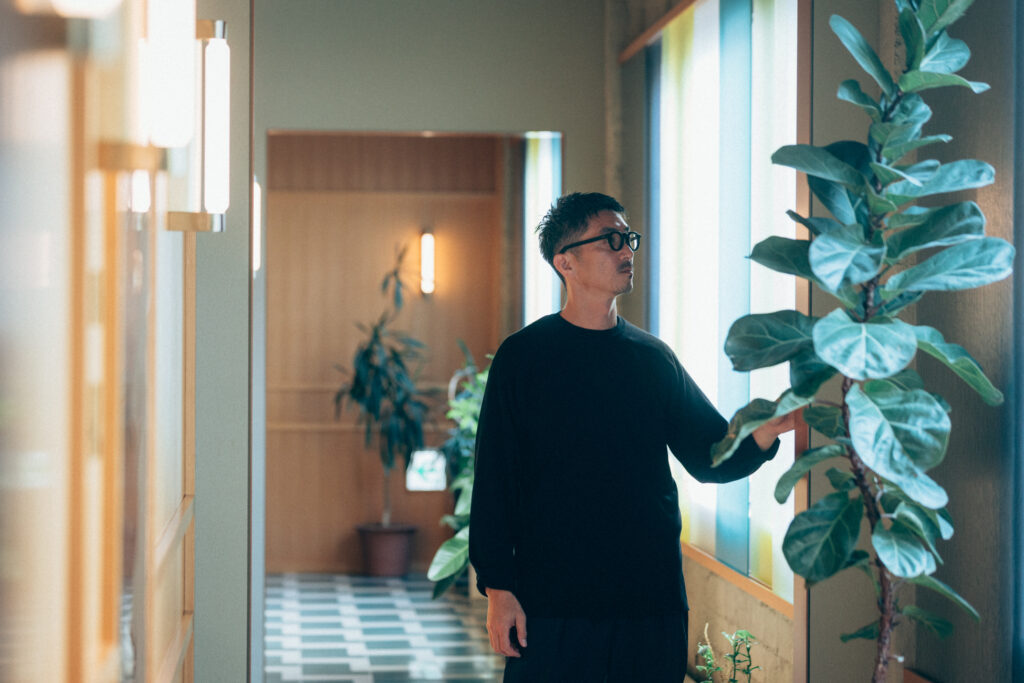
安齋 好太郎
Kotaro Anzai
Born in 1977 in Fukushima Prefecture. Anzai took over the family business as the third generation of Anzai Construction Industry, which has been in existence for 66 years since his grandfather’s generation in Nihonmatsu City and established Lifestyle Kobo Anzai Construction Industry in 2006, where he became CEO. Since then, he has been involved in numerous projects, and in 2019, changed the company name to ADX, which is derived from his hometown mountain, Mt. Atadara. With the philosophy of “Living with Forests,” ADX has been involved in the construction and design of sustainable projects that coexist with nature, both in Japan and abroad, from a multifaceted architectural approach. His representative works include “House in Goura,” “One Year Project,” “K5,” “KITOKI,” and “SANU 2nd Home.” He has received numerous awards, including the Grand Prize (Governor’s Award) in the “Wood City TOKYO Model Architecture Award” and the Grand Prize (Minister of Environment Award) in the “Wood Design Award 2022”. While moving back and forth between the city and nature, he is looking at the fundamentals of manufacturing.
text : Jun Kuramoto
photo : Naoto Date
interview : Daisuke Horie
